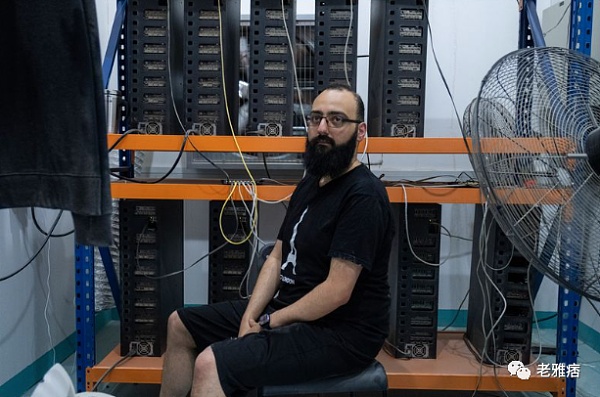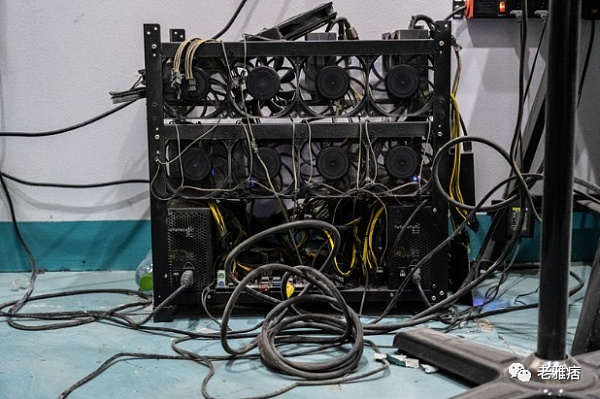Fri, June 17, 2022,
By Lawrence Hurley
WASHINGTON (Reuters) - Encircled by an ominous security fence and off-limits to the public since March 2020, the U.S. Supreme Court is poised in the coming weeks to issue a major ruling that could dramatically curtail abortion rights from behind closed doors with not a single justice in sight.
No members of the public have been allowed in the courthouse since COVID-19 pandemic precautions were implemented in March 2020. The scene at the court has become more tense following protests and threats against some of the nine justices prompted by the May leak of a draft opinion indicating they are set to overturn the landmark 1973 Roe v. Wade ruling that legalized abortion nationwide. The court has a 6-3 conservative majority.
The 8-foot (2.4 meters) tall fencing was erected in the days after the leak as the court ramped up security measures.
While the rest of official Washington, including other government buildings including the White House and Capitol, has reopened its doors to the public at least partially as the pandemic ebbs, the top U.S. judicial body remains in a form of lockdown with what appears to be siege mentality even as it wields huge influence over public policy.
For Guido Reichstadter, an abortion-rights protester camped out in front of the courthouse since the beginning of June, the fencing is a sign of how out of touch the justices - or at least the six conservative ones - are with public sentiment.
"They are trying to insulate themselves from the effects of their actions. Why else would you put a fence up?" Reichstadter asked.
Reichstadter was arrested on June 6 for locking himself to the fence by the neck and spent a night in jail.
"To me it sends a message that they are weak, they are afraid, they are isolated," Reichstadter said of the fence.
Emotions have run high since the Politico news organization published the draft abortion decision authored by conservative Justice Samuel Alito on May 2.
Since then, protesters have rallied outside the homes of some of the conservative justices. A California man named Nicholas Roske, carrying a handgun, ammunition, a crow bar and pepper spray, was charged with attempted murder after being arrested on June 8 near Justice Brett Kavanaugh's Maryland residence.
Congress on Tuesday passed legislation to bolster security for the nine justices, though lawmakers did not include protections for the families of clerks and other Supreme Court employees due to Republican opposition.
After the leak, conservative Justice Clarence Thomas, known for his criticism of the Roe ruling, said on May 6 at a legal conference in Atlanta that the court should not be "bullied into giving you just the outcomes you want."
Anti-abortion advocates are sympathetic to concerns about the safety of the justices, saying they also have received threats following the leak.
"I would say the court is protecting itself, protecting their employees," said Kristan Hawkins, president of the group Students for Life.
EMERGING SLOWLY
The abortion ruling will come in a case involving a Republican-backed Mississippi law banning abortion after 15 weeks of pregnancy that was struck down by lower courts as a violation of the Roe precedent. The court also has 17 other cases to decide, with the term usually completed by the end of June, including rulings that could expand gun rights, favor Christian conservatives and limit the power of the federal government to combat climate change, among other issues.
The court has emerged slowly from the pandemic. It resumed in-person oral arguments last October after holding remote arguments by teleconference for 18 months, but let only court staff, lawyers and some reporters into the courtroom. Since the court completed oral arguments for the term on April 27, outsiders have been kept from the building.
One of the many changes in court practice instituted during the pandemic was issuing rulings only online, with no official court session. That means justices no longer read from the bench summaries of their rulings and dissenting opinions. It was previously an opportunity for justices who strongly disagreed with a ruling to passionately voice their views.
A court spokesperson did not respond to a question on why the justices have not resumed reading announcements from the bench. The court has not said when, or if, such sessions will resume. It has shown no signs of live-streaming audio of opinion announcements in the same way that audio of oral arguments has been provided.
Gabe Roth, executive director of Fix the Court, a group advocating for court reform, said there is no reason not to livestream decision announcements, noting it would be the equivalent of President Joe Biden holding a news conference in which he summarized a new executive order.
"It's infuriating they are so resistant to change, but that's kind of what they are known for," Roth said of the court.
(Reporting by Lawrence Hurley; Editing by Will Dunham)

James A. Morano
One sure way to perpetuate poverty, high welfare costs and high crime rates in this country is to make sure single women can’t get abortions. Then there will be a plentiful supply of single mothers who can’t work because they have to care for an unwanted child, a child who will grow up in desperate circumstances, drop out of school, get a minimum wage job and ultimately come to the conclusion that robbery, drug dealing and violent crime, pay better.
Some people argue that abortion is the murder of an innocent child and is a violation of “God’s law.” For those who believe, that is certainly a legitimate and sincere concern.
However, unlike some countries — most notably in the Middle East — the United States Constitution was developed, not to adhere to any one of the many understandings of “God’s law”. Its purpose was and is, to devise and implement a system of government that creates a just, free, stable and sustainable society of self-governed people.
Therefore, the laws of the country should be made and enforced with that as a goal and not be evaluated on whether or not they comply with one of the many and varied understandings of “God’s law”. Adherence to “God’s law” is an individual decision, based on one’s belief.
As a people, we have to decide which does more damage to our society: abortion or the cost, suffering, poverty and crime resulting from the prohibition of abortion. A woman has to decide whether or not to abort an unwanted child, based on her belief system, financial means, health, etc. This is never a decision taken lightly, for abortion is at best, unpleasant; at worst, abhorrent.
As in many real-life situations, the choice is not between black and white, good and evil. Sometimes one has to choose the lesser of two evils, a difficult decision to be sure, but a decision that should be made by the individual, not by the government.
James A. Morano lives in New Britain Township.
This article originally appeared on Bucks County Courier Times: Guest Opinion: Abortion shouldn't be the government's call

The Wider Image: With U.S. abortion access in jeopardy, this doctor travels to fill a void
Mon, June 13, 2022,
By Gabriella Borter
(Reuters) - Planned Parenthood and other abortion rights groups are expanding a network of staff to guide patients through what is expected to become an increasingly complex and expensive process to obtain abortions across much of the United States.
Regional affiliates of Planned Parenthood said they are hiring more "patient navigators," a role dedicated to helping women find abortion appointments and secure money to cover medical, travel and childcare costs.
A sharp increase in patients needing such support is likely should the U.S. Supreme Court strike down the federal right to an abortion, said abortion providers and funds that help cover abortion-related costs. Twenty-six states could move to quickly ban abortion, requiring women in those places to travel potentially hundreds of miles to the closest abortion clinic.
The prospect of a drastically changed U.S. abortion landscape has leading reproductive health organizations rethinking their approach.
"It’s really a big spider web that's being built throughout the country," said Angela Huntington in Missouri. She was hired in September as the first patient navigator at the Planned Parenthood Great Plains affiliate, which operates clinics in Arkansas, Missouri, Oklahoma and Kansas.
Clinics and funds in places that already limit abortion access have relied often on an informal system of coordination to help patients find the nearest and soonest appointment and cobble together financial aid.
Huntington said the Great Plains affiliate saw the need for a formalized network after Texas enacted a law in September that banned abortion after six weeks of pregnancy, resulting in more women traveling from Texas to other states for abortions.
Approximately 850 patients sought financial assistance for abortions through the affiliate in September, up from about 150 women in August, she said. The Great Plains organization has now expanded its patient navigation team to seven people, Huntington said.
Other Planned Parenthood affiliates have hired or are planning to hire more patient navigators to help with referrals and funding coordination, according to spokesperson Lauren Kokum.
Those include the South Atlantic affiliate, which currently has one navigator across Virginia, West Virginia, North Carolina and South Carolina, and the Florida affiliates, which have hired three.
PREPARING FOR PATIENT INFLUX
Abortion funds, which have long played a role in helping patients with medical costs and practical support such as booking hotels, also are scrambling to prepare for the expected spike in women traveling for abortions.
The National Abortion Federation (NAF), an organization that represents U.S. abortion providers and offers financial assistance to patients, doubled the size of its case management team two years ago amid a wave of new state restrictions that complicated patients' access to abortion.
As of May, NAF was spending about 80% of its donation-based travel assistance fund on helping patients leave Texas to get abortions because of that state's six-week ban, according to Rachel Lachenauer, the director of patient experience.
With the threat of more state abortion bans that would affect women far beyond Texas, the organization is "in hyperdrive" as it assesses how it can most effectively distribute its travel resources, Lachenauer said.
“You can see how we are really, really quickly going to hit our capacity,” she said.
NAF is planning to concentrate the efforts of its 20 case managers on states such as Illinois, which protect abortion rights and will see an increase in patients from surrounding states with more restrictive laws, she said.
The Chicago Abortion Fund, similarly bracing for a wave of abortion seekers coming to Illinois, plans to expand its team of support coordinators to six from two by the end of June, said Megan Jeyifo, the fund's director.
The coordinators oversee the organization's volunteer case managers and handle patient support such as providing gas and food money for traveling patients, she said.
The Chicago Abortion Fund now communicates with patient navigators at Planned Parenthood's Illinois and St. Louis affiliates almost daily to discuss an increasing number of patient cases requiring assistance, Jeyifo said.
The fund also is building relationships with new abortion providers opening clinics in Illinois to accommodate the heavier patient load.
"We're going to need all of us in this kind of ecosystem to be able to make sure people get the care they want," Jeyifo said.
(Reporting by Gabriella Borter in New York; Editing by Colleen Jenkins and Cynthia Osterman)










